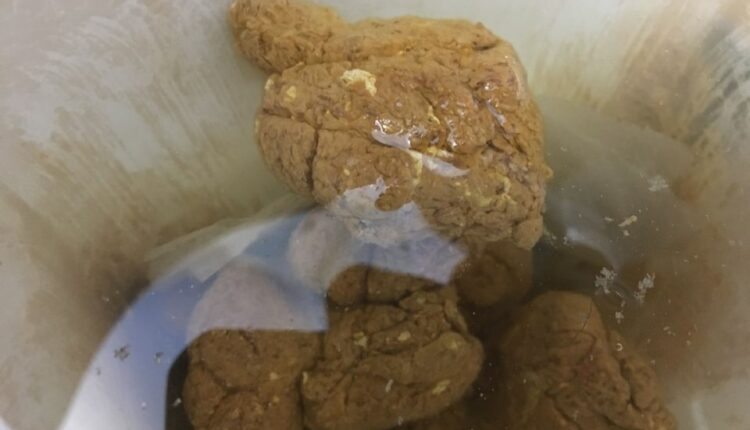How to test for candida in stool?
How is it diagnosed? To test for Candida in your stool, your doctor will first take a stool sample. They’ll examine it under a microscope to see if there’s Candida growth. Then they’ll take a small sample and let it incubate for a few days so that any yeast in your stool can grow.
Overview. Candida is a genus of yeast that naturally occurs in the intestines, on the skin, and in mucous membranes. Most people have some level of Candida throughout the body. It’s usually harmless. However, an overgrowth of Candida can lead to an infection called candidiasis. The mouth and vagina are the two most common places for candidiasis.
Talk to your doctor about adding a probiotic to your daily routine. Eat fermented foods. Fermented foods, such as sauerkraut, kimchi, and yogurt, are foods that have been altered by bacteria or yeasts. Therefore, they contain a lot of bacteria that can help keep your gut healthy. Eat prebiotic food.
Prebiotic foods promote the development of good bacteria in your gut. Foods with lots of fiber or complex carbs are your best sources of prebiotics. These include fruits, vegetables, and whole grains.
This is because a normally functioning immune system will keep naturally occurring fungus in check. Candida is often found in people living with HIV or stage 3 HIV (AIDS) who are experiencing diarrhea.
What are the symptoms? Symptoms of candidiasis differ depending on what part of the body is affected. Candidiasis in your mouth is called thrush. It causes white lesions that look like cottage cheese on your tongue or inner cheeks.
This can allow Candida to grow. Sometimes it’s necessary to take antibiotics, but make sure you only take them in those cases. Eat a healthy diet. A healthy diet that includes whole grains and foods with lots of fiber, such as beans and apples, will help keep your gut healthy.
How to tell if you have too much candida in your stool?
This cheesy substance is one of the most common signs of too much candida in a bowel movement. Yeast in the stool has also been compared to cottage cheese. The candida can also look “frothy,” similar to yeast in bread mix when it is rising, or candida can look like a mucus-like substance.
If you notice excessive candida in your stool and think the cause is from too much yeast, reducing the amount of bread products in your diet may help. Eating yogurt and taking probiotics will help balance the candida and other intestinal flora too.
Gray, pale stools may indicate gall bladder disorders, hepatitis or absorption problems. Green colored stool may be related to bacteria but is most often caused by food coloring or vegetables and fruit of color.
One of the first signs of a yeast infection is apparent candida discharge in the stool.
Candida Albicans is a kind of yeast, or intestinal flora, that normally lives in the gastrointestinal tract. Yeast can reproduce and multiply if the immune system becomes compromised or from eating a diet too high in sugar.
An increase in candida in the stool may occur with constipation or diarrhea. However, if yeast-overgrowth increases for weeks at a time or with rectal bleeding, consult your physician for an evaluation as too much mucus could be a symptom of Crohn’s Disease or Ulcerative Colitis.
What percentage of stools are candida?
In fact, researchers have found Candida in around 65% of stools from healthy adults. Most people might not know they have Candida in their stools until they become aware of the following: white, yellow, or brown mucus. a white, yellow, or light brown string-like substance. froth or foam. loose stools or diarrhea.
froth or foam. loose stools or diarrhea. If people have a Candida overgrowth, they may also experience the following symptoms: a headache . weakness or fatigue. flatulence. craving for sweets. itching skin. Other symptoms of a Candida overgrowth depend on where the yeast is in the body.
A doctor will take a stool sample to determine if there is a Candida overgrowth present.
Signs and symptoms. White, yellow, or brown mucus in the stool may indicate Candida . Although the presence of Candida in stools can indicate an overgrowth, this is not always the case. In fact, researchers have found Candida in around 65% of stools from healthy adults.
Potential side effects of antifungal drugs may include feeling nauseous, vomiting, and diarrhea.
Signs and symptoms. Causes. Diagnosis. Treatment. Prevention. Outlook. Candida is a type of yeast that grows in the body in areas such as the mouth, gut, and vagina. At normal levels, it does not cause any problems, but when a person has an overgrowth of Candida in the gut, it can appear in stools.
only use antibiotics when necessary and as intended. avoid or limit the intake of processed or sugary foods. keep blood sugar levels in check, as this can help prevent Candida infection.

